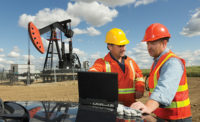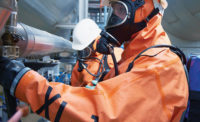It is especially important in high-risk industries, such as oil and gas and chemical, that workforce training and education is prioritized beyond that of an afterthought in a company's safety plan. Strengthening the need to account for frontline worker training and educational programs is the Bureau of Labor Statistics’ 2014 Census of Fatal Occupational Injuries Summary report that oil and gas industry fatal work injuries increased by 17 percent from 2013 to 2014.1
With rapid technological innovation occurring in this field and the development of new equipment and regulations attempting to keep pace, it's essential that companies be proactive about training and education. Consider a combination of the following three types of training sessions to guarantee employees are properly equipped on the worksite:
1 Instructor-led classroom training
A routine group training session is often the most common used by companies because it lends itself to easy and efficient planning. It presents material to a large or small group of employees, everyone receives the same information at the same time, it can be cost-effective, and workers will have face-to-face contact with the instructor.
But companies must understand that it's both the “what” and the “how” they teach frontline workers that enhances their capabilities to safely handle day-to-day and operational duties.
Consider these tactics when designing an effective and engaging training session:
• Have onsite workers drive the discussion. Involve the individuals responsible for day-to-day duties to share their best practices and experiences about a near-miss incident, as well as encourage them to ask any questions they may have about the training topic at hand.
• Tell and “Show: Integrate pertinent technologies and devices into trainings in order to both orate about and demonstrate their importance. Not only will this provide clarity in the training, but it also serves as a nice lecture alternative.
2 Hands-on training
Despite the fact that hands-on application training may require more resources from company management, a committed investment to improve employees' safety knowledge through tangible exercises will far outweigh the additional spend. Through these sessions, onsite workers have the opportunity to immerse themselves in the physical practice of a new process or equipment. This method is extremely valuable for onsite senior leadership, as it provides a window into behaviors that can help evaluate workers' level of understanding prior to real-site work.
Analyzing nearly 40 years’ worth of research, a 2011 study published in the Journal of Applied Psychology found that in jobs where workers are placed in high-risk, hazardous environments, hands-on training proved to be the most effective at improving safe work behavior.2 For companies dedicated to a stronger safety culture, educating onsite workers with the skills and confidence on how to avoid potential risks while using equipment is a crucial piece of the puzzle.
3 “In the moment”
Most people can gain insights from their personal experiences, and while formal training sessions are certainly necessary, consider capitalizing on “teachable moments” when appropriate. Senior leaders should consider providing in-the-moment learning for all onsite workers, especially after a potentially life-threatening incident occurs. This comes after ensuring that every worker is out of harm’s way, of course.
Senior leaders must take the time to observe their employees and understand how they can best facilitate self-analysis in these events. By both explaining to workers how to resolve issues and also asking staff questions, taking the time to approach the problem from multiple angles can lead to the discovery of solutions aimed at best minimizing the chance of a recent event reoccurring. To ensure workers truly understand which processes were correct, as well as the areas where something went wrong and the risks, consider asking the following to promote real-time teaching:
• Is this a new or existing work process? Is there new equipment involved? Are we following compliance regulations that have been updated?
• What was the outcome versus what was expected? Were the processes followed correctly, and where might have gaps existed?
• If the opportunity existed to redo the process, what should be done differently?
In an industry where a well-trained and knowledgeable workforce is vital for a safe and efficient worksite, companies must focus on incorporating a comprehensive training program into their safety plans. Investing in a combination of training methods will provide the foundation for a thriving future.
References
1 http://www.bls.gov/news.release/cfoi.nr0.htm
2 http://www.apa.org/pubs/journals/releases/apl-96-1-46.pdf



